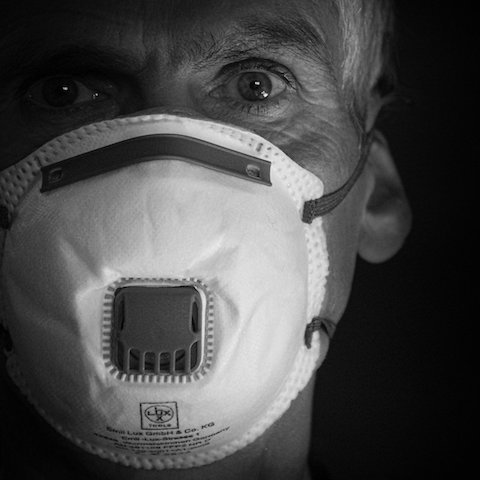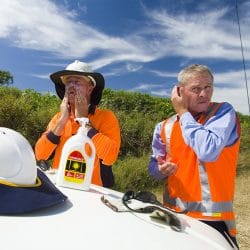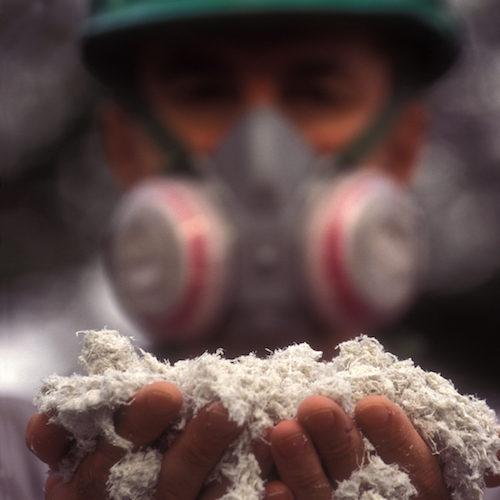IN THIS ISSUE
Spotlight on COVID-19 – Webinar recording on workplace transmission of COVID-19
Research updates – New data on sun exposure in outdoor workers
Partner updates – Raising awareness on radon, new Occupational Disease Statistics website
Recent publications – Knowledge translation, cancer risks in a First Nations community, and pesticides
Communications update – Recent stories from our Carcinogens in the News digest
SPOTLIGHT ON COVID-19
Webinar recording on workplace transmission of COVID-19
As part of our ongoing work to assess and reduce exposure inequities across jurisdictions and populations, our team has been studying the impact the COVID-19 pandemic is having on occupational health. At a recent webinar presented in partnership with the Industrial Accident Victims Group of Ontario (IAVGO), our co-Principal Investigator Dr. Cheryl Peters and collaborator Dr. Mieke Koehoorn shared the results of their research on those who may be more susceptible to COVID-19 transmission at work.
Based on an analysis of media reports on workplace exposures, the largest number of unique outbreaks occurred among industrial butchers and meat packing plant workers, nurses and nurse aides, material handlers, and cashiers. As well, one quarter of all media articles analyzed mentioned immigrant or temporary foreign workers as part of the reported COVID-19 outbreak.
The webinar recording is available here.
RESEARCH UPDATES
New data on sun exposure in outdoor workers
Despite the significant health and economic impacts of workplace exposure to solar ultraviolet radiation (UVR), occupational exposure measurements to quantify the hazard are limited in most Canadian provinces. To address this gap, our team assessed sun exposure in outdoor workers in Alberta, which has some of the highest ambient sun levels in the country.
The results of our study show that outdoor workers in Alberta may be at considerable risk of solar UVR exposure in the summer months. Almost half of the workers were exposed to levels that exceeded the international occupational exposure limit guideline, with some workers exposed to levels 13 times this guideline.
We also found that few jurisdictions worldwide have surveillance systems in place to control exposure and reduce the risk of non-melanoma skin cancers in this vulnerable worker population. Some key considerations for designing and implementing an occupational surveillance program are summarized in our results.
The full results from this research are available here.
PARTNER UPDATES
Raising awareness on radon exposure
November was Radon Action Month. This year, we’re highlighting some of the work our partners are doing to raise awareness about radon and support action to reduce exposure to this radioactive gas:
- BC Cancer recently launched new pages on their website to share information about radon and cancer prevention. We’re also working with them on a pilot project that aims to increase awareness about radon exposure, testing, and mitigation among staff, and to launch a library lending program for radon test kits at the BC Cancer Library in Kelowna.
- Our co-Principal Investigator Dr. Cheryl Peters and her colleagues at Evict Radon are assessing the impact of the COVID-19 pandemic on residential radon exposure, as Canadians are now spending more time at home. Preliminary work by researchers indicates a 35% jump in residential radon exposure from March 2020 onwards.
- We continue to be part of the advisory team for Take Action on Radon. Their signature initiative, the 100 Radon Test Kit Challenge, is providing free radon test kits in 20 communities across Canada. They also recently held a Q&A on radon with our co-Principal Investigator Dr. Anne-Marie Nicol and other radon experts.
Learn more about exposure to radon on our radon resources page.
OCRC launches new Ontario Occupational Disease Statistics website
The Occupational Cancer Research Centre (OCRC) recently launched a new website on occupational disease in Ontario. The interactive website allows users to explore the risks of cancer and other diseases among workers in various industries and occupations. Data is currently available for the construction, healthcare, metal manufacturing, mining, and transportation sectors, with additional sectors and workplace exposures coming soon.
The website is available here.
RECENT PUBLICATIONS
CAREX Canada’s knowledge translation approach, cancer risks in a First Nations community, and environmental pesticide exposures
Our team has recently published several journal articles on CAREX research, including:
- A summary of our knowledge translation approach from 2012-2017, including the process model we used to prioritize our efforts and the resulting impacts we’ve had on cancer prevention.
- The results of our screening-level assessment of cancer risk from outdoor air in Aamjiwnaang First Nation.
- The methods and analysis for our new environmental exposure estimates for three pesticides – chorothalonil, 2,4-D, and glyphosate.
A full list of our publications is available here.
COMMUNICATIONS UPDATES
Recent stories from our Carcinogens in the News digest
This month, we’re featuring three stories that appeared in our Carcinogens in the News digest:
- Quebec is lowering the acceptable limits of asbestos permitted to be in the air in workplaces. The new regulation will bring the province in line with norms already in place in Canada and throughout North America.
- Researchers at the Institute for Work & Health (IWH) compared the costs and benefits of different prevention methods to reduce silica dust exposure for construction workers. They found that a combination of three methods – wet method, local exhaust ventilation, and personal protective equipment – can avert the highest number of lung cancer cases (107 cases per year). However, the most cost-beneficial approach is the wet method used in combination with local exhaust ventilation, which can avert 95 lung cancer cases per year. For more research and news from the IWH, subscribe to their monthly newsletter here.
- The Canadian Cancer Society has released their Canadian Cancer Statistics report, which provides new, detailed estimates of lung cancer incidence, mortality, survival, and prevalence in Canada. It also includes information on important and emerging issues related to lung cancer, such as risk factors, screening, treatment, and equity.
You can subscribe to our monthly Carcinogens in the News digest here.
Please note that the CAREX Canada e-Bulletin is now a bi-annual digest. For more regular communications from us, please subscribe to Carcinogens in the News, a monthly digest of media articles, government reports, and academic literature related to the carcinogens we’ve classified as important for surveillance in Canada.
Subscribe to our newsletters
The CAREX Canada team offers two regular newsletters: the biannual e-Bulletin summarizing information on upcoming webinars, new publications, and updates to estimates and tools; and the monthly Carcinogens in the News, a digest of media articles, government reports, and academic literature related to the carcinogens we’ve classified as important for surveillance in Canada. Sign up for one or both of these newsletters below.
CAREX Canada
School of Population and Public Health
University of British Columbia
Vancouver Campus
370A - 2206 East Mall
Vancouver, BC V6T 1Z3
CANADA
As a national organization, our work extends across borders into many Indigenous lands throughout Canada. We gratefully acknowledge that our host institution, the University of British Columbia Point Grey campus, is located on the traditional, ancestral and unceded territories of the xʷməθkʷəy̓əm (Musqueam) people.








